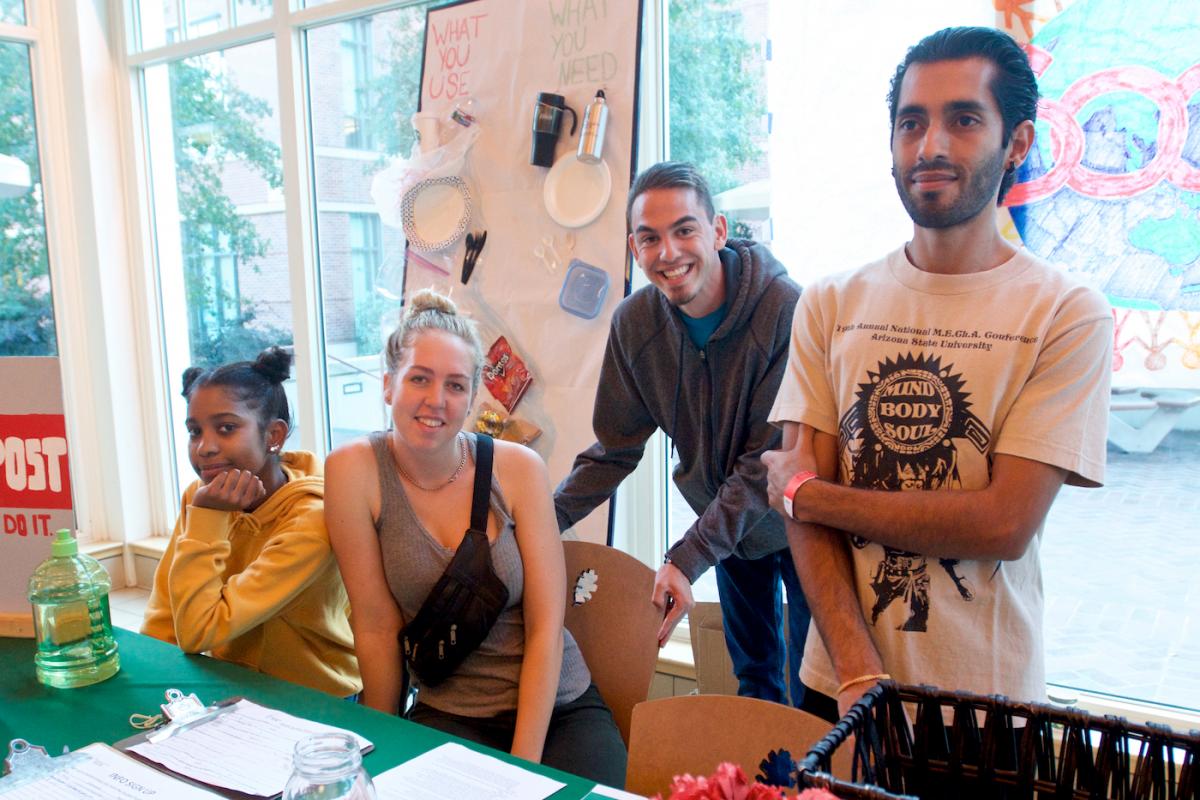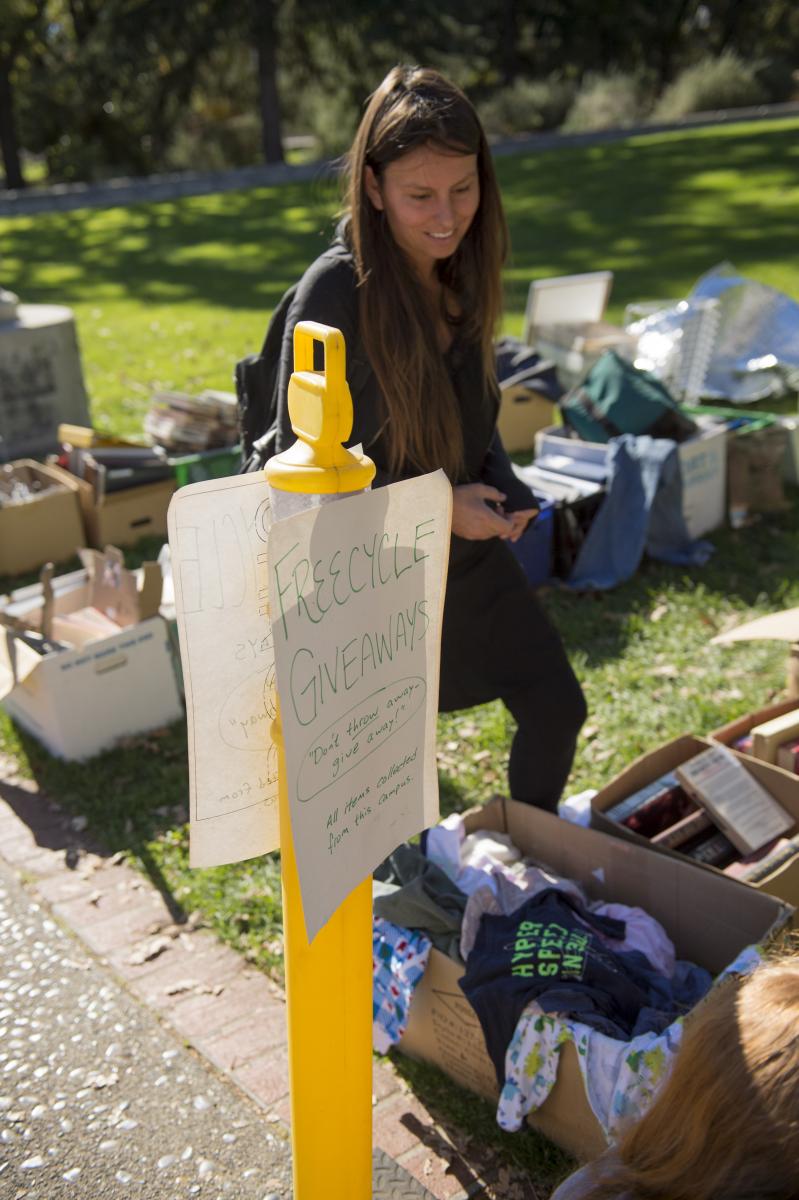Student Involvement in Sustainability

The photo above features student Eco-Leaders Club members at the Fall Wellness Fair educating attendees about shrinking their carbon footprints and recruiting for single-use plastic ban petition signatures.
The SRJC Student Government Association (SGA) leadership has demonstrated a strong commitment to sustainability through its goals, programs and activities. The Student Senate works collaboratively on sustainability efforts at Santa Rosa Junior College, sets the student agenda for sustainability and advocates for the implementation of best practices throughout the District.
Without the enthusiasm, dedication, and imagination of our students, SRJC would not be the green college it is today. Student efforts have led the college toward sustainable policy and practices and will continue to fuel our efforts and interest in conservation and sustainability.
The following are some of the ways that students have inspired us with their strong commitment to going green and “Creating a Culture of Sustainability,” including accomplishments, current projects, future initiatives and a list of core values.

A student peruses the boxes of donated items offering clothing, books, and school supplies.
Climate Leadership
Former SRJC President Robert Agrella signed the Talloires Declaration on April 20, 2011, as a result of a collaboration between administration, faculty, and staff. This act laid the foundation for the school to begin operating with regard to the tenets of sustainability. In Fall 2018, President Emeritus Dr. Frank Chong, signed the President's Climate Commitment, setting the tone for a continued infusion of sustainability principles and practices throughout the planning and operations of the district, and facilitating the development of a Climate Action Plan (CAP).
Food Choice
By replacing one meat or dairy-based meal per day with one plant-based meal, we can minimize our personal water and carbon footprint from our diet by roughly 25%. A fully plant-based diet moves that number to 60%.
When people think about the dire consequences of a changing climate, they often get overwhelmed and wonder how they can do anything about it. Changing our diet to embrace more plants and fewer animal products is one option that anyone can do right away.
- Foods that are high on the food chain – particularly large ruminant animals (cows, goats, sheep).
- Animal feed requires fertilizer and irrigation water; emissions are also required if forest land is converted into grazing land.
- Livestock provides only 18% of calories but takes up 83% of farmland
- The potent greenhouse gas methane is released from their digestion and manure.
- Seafood
- Open-ocean fishing fleets depend entirely on fossil fuels.
- Highly sought-after fish (i.e., bluefin tuna and swordfish) are typically overfished, resulting in additional sea travel and increased emissions.
- Highly processed foods
- More steps in the production process mean more energy used.
- Imported foods
- More fossil fuels are used when transporting food over long distances.
For Comparison - FOOD FOR THOUGHT
Beef vs Beans: A serving of beef uses 36 square miles of land and 570 gallons of water. A serving of beans uses 0.15 square miles of land and 21 gallons of water.
Continued Efforts & Future Sustainability Initiatives
- Build relationships with key college stakeholders and decision makers, including the Integrated Environmental Planning Committee (IEPC), to create a vision statement and strategic plan for the institutionalization of sustainability philosophy and practices into a comprehensive sustainability management plan. Students work with campus leaders in both Santa Rosa and Petaluma to promote District-wide sustainability efforts.
- Continue to develop the Bertolini Student Center into the model sustainable building at SRJC for both facilities and sustainable practices and behavior.
- Continue to advocate for comprehensive composting at the Santa Rosa or Petaluma Campus. Currently, we are only able to compost back-of-house waste.
- Conduct a comprehensive sustainability audit of the Bertolini Student Center.
- Implement Fair Trade sourcing for supplies, vendors, and food by working with the Auxiliary Enterprises Committee.
- Advocate for policies that affect sustainability at the local, state, and national levels; students have been successful in collaborating with local government officials.
Core Values for Sustainability
- Aspire to Zero Waste
- Use Renewable Resources for Energy
- Integrate Source Reduction Strategies
- Practice Local & Organic Food Sourcing
- Use Green Building Principles in all Projects
- Limit Greenhouse Gas (GHG) Emissions (Climate Protection)
- Purchase Using Fair Trade Guidelines
- Integrate Sustainability Throughout Curriculum
